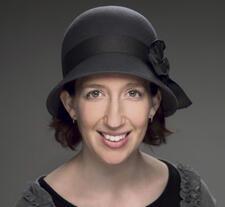Religion: Judaism-Orthodox
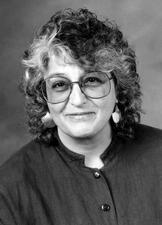
Rachel Adler
Rachel Adler is unquestionably among the leading constructive Jewish theologians, translators, and liturgists of the modern era. One of the first theologians and ethicists to integrate feminist perspectives and concerns into the interpretation of Jewish texts and the renewal of Jewish law and ethics, Adler is the award-winning author of Engendering Judaism.
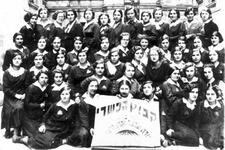
Agudat Israel: Interwar Poland
Agudat Israel, the world movement of Orthodox Jewry, introduced substantial reforms that changed the status of women in Orthodox society. In particular, the Bais Ya’akov model pioneered by Sarah Schenirer focused on women’s education as a way of creating a more robust Orthodox community against the pressures of modernity.
Agunot
Agunot are women who are unable to obtain a rabbinic divorce because their husbands or husbands’ male next of kin are unable to give one, leaving them chained in marital captivity. Although many efforts have been made to address these problems, for those most part agunot in halakhically observant communities continue to face deep-seated challenges.
Artists: Contemporary Anglo
In Britain, both feminism and feminist art took considerably longer to emerge and make their mark than in the United States, but when they did, many Jewish women artists created profound artistic work. British Jewish women artists generally hold both Jewishness and gender as central to their artistic output. Their art reveals the diverse ways in which women perceive their Jewishness in contemporary Britain.
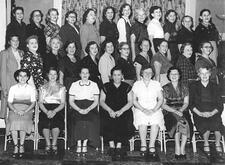
Assimilation in the United States: Twentieth Century
Jewish women assimilating into a changing American society across the twentieth century navigated often conflicting gender roles. As they strove to achieve upward social mobility, they adapted Jewish assumptions of what women, especially married women, should do to accommodate American norms for middle class women. Their collective accomplishments registered in political activism, organizational creativity, strong support for feminism, religious innovation, and educational achievement in the face of antisemitism, stereotypes, and denigration.

Australia: 1788 to the Present
The first Jewish women, like the first Jewish men, arrived in Australia on the very first day of European settlement in 1788. Those convict pioneers were followed by free settlers who made Jewish communal and congregational life viable and helped to develop the vast continent. Jewish women have made significant contributions to Australia's national story.
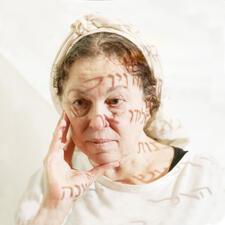
Helène Aylon
Helene Aylon was an American, New York-based, multimedia visual artist who began by creating process art in the 1970s, focused on anti-nuclear and eco-activist art by the 1980s, and subsequently devoted more than 35 years to the multi-partite installation The G-d Project. This last body of work’s often direct or indirect textuality resonates from and responds to Judaism’s traditionally male-dominated textuality as part of a larger commentary on women in Judaism.

Ba'alot Teshuvah: Jewish Women Who Become Orthodox
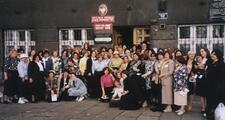
Bais Ya'akov Schools
Bais Yaakov is a network of schools and youth movements for Orthodox girls, which was founded in Krakow, Poland, in 1917 and grew into a system of hundreds of schools in Poland and beyond. It quickly rebuilt after the Holocaust and thrives today in Orthodox communities around the world.

Adina Bar-Shalom
Adina Bar-Shalom defines herself as a Haredi woman, not a feminist but a go-getter. She is involved in and has initiated Israeli cultural, public and political activities in conjunction with secular organizations and activists and has participated in many social fora.
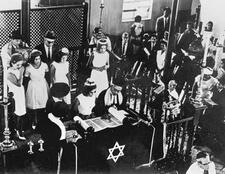
Bat Mitzvah: American Jewish Women
When Judith Kaplan Eisenstein became the first American girl to mark her bat mitzvah on March 18, 1922—two years after women were guaranteed the right to vote in the US—she recalled “shock[ing] a lot of people,” especially her disapproving grandmothers. Today, American girls across the Jewish spectrum, from secular to ultra-Orthodox, mark their coming-of-age in various forms.
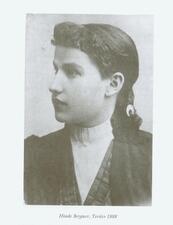
Hinde Bergner
Hinde Bergner holds a special place in Yiddish literature by virtue of the fact that her memoir of family life in a late nineteenth-century Galician shtetl is one of few extant Yiddish memoirs to describe the traditional Jewish family on the edge of modernity from the perspective of a woman. Her intimate portrayal of her life results in a valuable source for Jewish social, family, and women’s history.
Rayna Batya Berlin
Rayna Batya Berlin was a Lithuanian woman committed to religious study who argued that women should be able to study the Torah and the Talmud. The only source of her life was written by her nephew, who describes her frustration with her subjugated status in her community and how she generally suffered in silence.
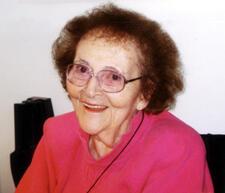
Hadassah Blocker
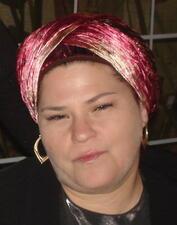
Rama Burshtein
Rama Burshtein’s films are among the most important created by a Haredi woman. Her first commercial film was shown exclusively to Haredi women, but Burshtein found the conventions of Haredi cinema poorly suited to her artistic aspirations, and her later films were aimed at the nonreligious world.
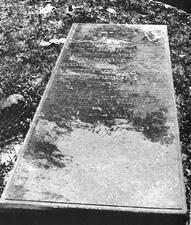
Caribbean Islands and the Guianas
Women were among the earliest settles in the Dutch and English Caribbean. Early Caribbean Jewish women, despite living in patriarchal societies, still managed to engage in public pursuits. As Caribbean Jewish communities became increasingly racially blended over time, women of color became some of the most definitive architects of distinctly Creole Caribbean Jewry.

Rebecca Chernin
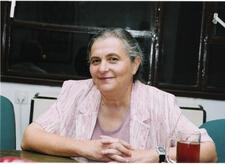
Veronika Cohen
Veronika Wolf Cohen has shaped Israeli minds in two very different ways, by developing national music curricula and by leading innovative Israeli-Palestinian dialogue groups.
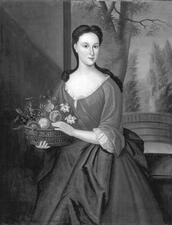
Colonial Period in the United States
Jewish women in colonial America led varied lives, with some occupying traditional roles as mothers and wives and others remaining single. Some ran their own businesses and others worked as servants for Jews with more money. Both in and out of the synagogue, women played a crucial role in early American Jewish communities.
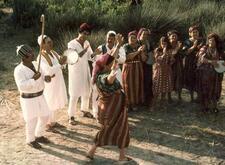
Community Dance Practices in the Yishuv and Israel: 1900-2000
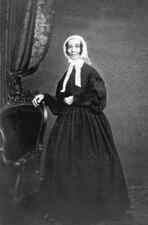
Education of Jewish Girls in the United States
American Jewish girls have had access to a broad range of educational opportunities. Pioneering innovations such as the Hebrew Sunday school opened doors to religious education, while in public schools, training schools, and the hallways of higher education, American Jewish girls pursued secular studies as well. Today, the landscape for American Jewish education has expanded beyond the classroom to include a range of experiential educational opportunities.

Blanche Goldman Etra
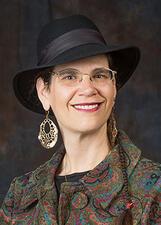
Mimi Feigelson
Rabbi Moses Feinstein
Rabbi Moshe Feinstein, one of the great Jewish legalists of the twentieth century, wrote numerous legal decisions responding to and affecting women’s lives. His pronouncements regarding women aimed to respond to women’s issues with respect and careful consideration, while also establishing a system in which the roles of men and women were distinctly imbalanced.
